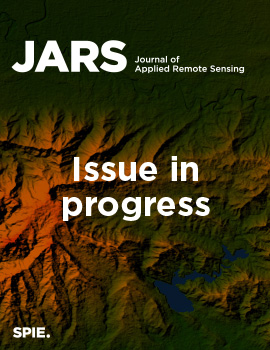Albert Rango, Andrea Laliberte, Jeffrey Herrick, Craig Winters, Kris Havstad, Caiti Steele, Dawn Browning
Journal of Applied Remote Sensing, Vol. 3, Issue 01, 033542, (August 2009) https://doi.org/10.1117/1.3216822
TOPICS: Unmanned aerial vehicles, Remote sensing, Image resolution, Photography, Satellites, Vegetation, Image processing, Spatial resolution, Digital photography, Data acquisition
Rangeland comprises as much as 70% of the Earth's land surface area. Much of this vast space is in very remote areas that are expensive and often impossible to access on the ground. Unmanned Aerial Vehicles (UAVs) have great potential for rangeland management. UAVs have several advantages over satellites and piloted aircraft: they can be deployed quickly and repeatedly; they are less costly and safer than piloted aircraft; they are flexible in terms of flying height and timing of missions; and they can obtain imagery at sub-decimeter resolution. This hyperspatial imagery allows for quantification of plant cover, composition, and structure at multiple spatial scales. Our experiments have shown that this capability, from an off-the-shelf mini-UAV, is directly applicable to operational agency needs for measuring and monitoring. For use by operational agencies to carry out their mandated responsibilities, various requirements must be met: an affordable and reliable platform; a capability for autonomous, low altitude flights; takeoff and landing in small areas surrounded by rugged terrain; and an easily applied data analysis methodology. A number of image processing and orthorectification challenges have been or are currently being addressed, but the potential to depict the land surface commensurate with field data perspectives across broader spatial extents is unrivaled.


 Receive Email Alerts
Receive Email Alerts